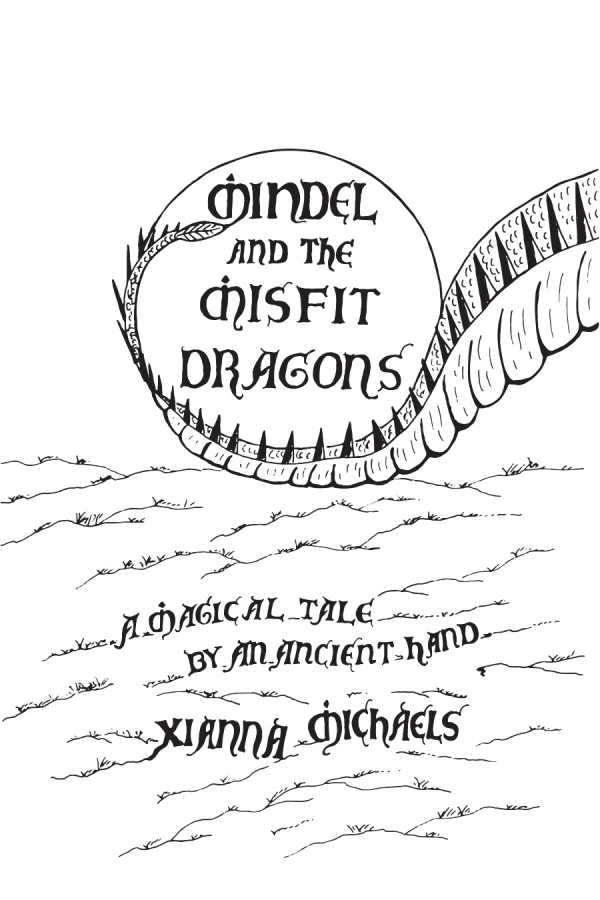
Mindel and the Misfit Dragons
A Magical Tale by an Ancient Hand
A young girl joins forces with a group of misfit dragons to save her home in this exciting adventure told in beautiful verse.
Mindel and the Misfit Dragons, a lushly illustrated rhyming fairy tale, assures tweens in those awkward middle years that it’s okay to be different because they will eventually find a place where they belong. With writing, illustrations, and calligraphy all done by Xianna Michaels, this story clearly represents a labor of love, and the author’s enthusiasm spills over.
Eight-year-old Mindel inhabits a castle called Draconmere with her parents, Sir Benjamin and Lady Leah. The inhospitable living conditions pose a problem for this devout Jewish family because the wind keeps blowing out the sacred Sabbath candles and the dampness destroys the Torah scrolls. Faced with the possibility of having to leave her home, Mindel sets out on a journey to rectify the situation, Along the way, she befriends some dragons who, because of their differences from their brethren, have not been hired by the humans to perform jobs.
Michaels describes the duties of “kindly dragons” this way: “They breathed their fire to serve as warning / So enemies took flight.” This concept of benevolent dragons who peacefully coexist with people is a welcome change from dragons who are either dangerous to people or are pets to be trained.
In skillful alternate rhyme, Michaels develops personalities for both the humans and the dragons in the story while simultaneously creating an exciting adventure. Because the story is told in the third person, people and dragons alike become well-rounded as the audience learns the viewpoints of all the key players. Resourceful Mindel always remains a believable child because she still has moments of fear, despite her overall bravery. The parent dragons fret over their offspring’s differences, yet they ultimately love their children. While his younger brother and sister cherish their odd appearances, the eldest laments, “I have these fins; I long to swim. / Mama wasn’t wrong. / A misfit’s life is very grim. / There’s nowhere I belong.”
A glossary in front defines terms like “falcon” and “moat,” the origin of character names, and key Jewish terms like “cholent” and “mitzvah.” Some familiarity with the Sabbath laws is advisable in order for non-Jewish readers to truly understand why the candles cannot be relit. Indeed, it sometimes seems unclear what age Michaels writes for, because she defines “falcon” and then frequently uses words more readily understood by high-schoolers, such as “wreaks” and “wanton.” This diction will not prohibit younger readers from understanding the gist of the story, although it may cause them to stumble over the rhymes.
The use of calligraphy also distracts. Although it is beautiful, the serifs on the hand-lettered pages make it difficult to read some words. That every page is bordered with an outline of a scroll combined with the calligraphy threatens to draw eyes away from the expert verse. Thankfully, though, the author’s rich black ink drawings pull readers back in by giving Mindel’s world a depth that augments the verses. The golden calligraphy set against a dark green background makes the back matter hard to read. The addition of gold lines to represent grass halfway down the back cover only intensifies the difficulty.
While young adults and adults may find the book’s treatment of belonging simplistic, older readers are in a better position to appreciate Michaels’ vocabulary and superb poetry.
Reviewed by
Jill Allen
Disclosure: This article is not an endorsement, but a review. The publisher of this book provided free copies of the book and paid a small fee to have their book reviewed by a professional reviewer. Foreword Reviews and Clarion Reviews make no guarantee that the publisher will receive a positive review. Foreword Magazine, Inc. is disclosing this in accordance with the Federal Trade Commission’s 16 CFR, Part 255.
